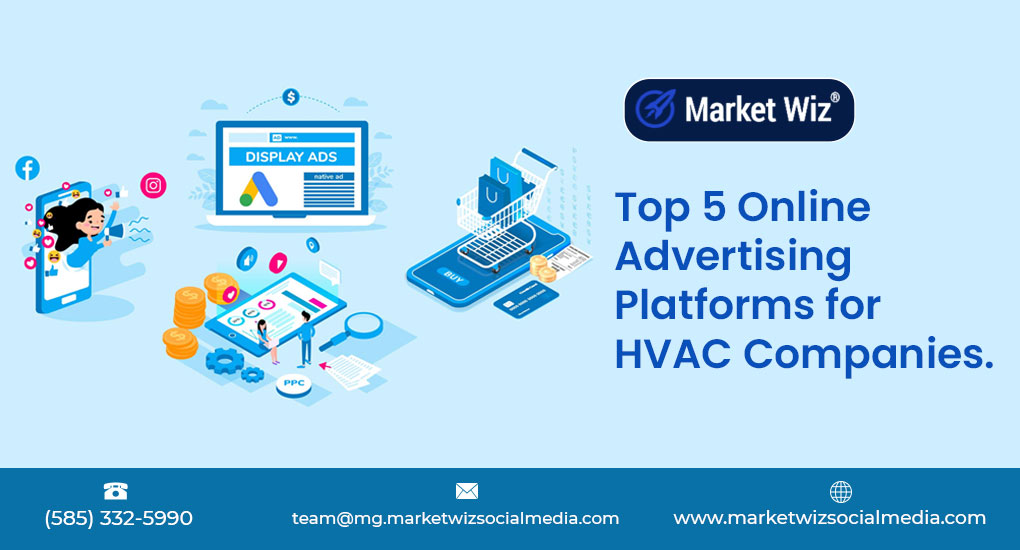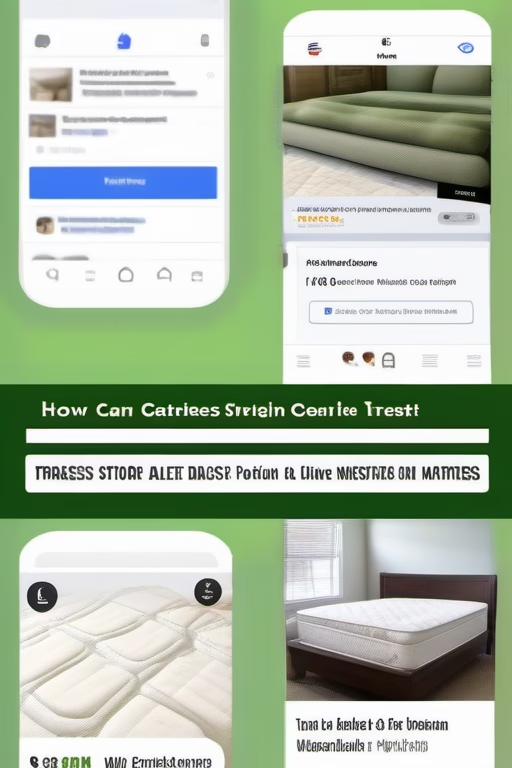How to Advertise Your Shipping Container Business Effectively
Enhance your visibility, attract more customers, and grow your shipping container business with proven advertising strategies
In the competitive landscape of the shipping container industry, standing out and effectively reaching your target audience is crucial for success. Whether you're involved in the sale, customization, or rental of shipping containers, implementing the right advertising strategies can significantly impact your business growth. This comprehensive guide explores proven methods to advertise your shipping container business effectively, ensuring you attract more customers and achieve sustained success.
1. Enhancing Online Presence
A robust online presence is the foundation of effective advertising in today's digital age. By optimizing your online footprint, you can attract more visitors to your website, increase brand awareness, and generate leads that convert into customers.
Optimize Your Website for SEO
Search Engine Optimization (SEO) is essential for improving your website's visibility on search engines like Google. By targeting relevant keywords related to shipping containers, such as "shipping container sales," "customized shipping containers," and "shipping container rentals," you can rank higher in search results, attracting more organic traffic.
Keyword Research
Conduct thorough keyword research to identify the terms your potential customers are searching for. Use tools like Google Keyword Planner, SEMrush, or Ahrefs to find high-volume and low-competition keywords that you can target in your content.
On-Page SEO
Implement on-page SEO best practices by optimizing your title tags, meta descriptions, headers, and content with your target keywords. Ensure that your website is user-friendly, with fast load times, mobile responsiveness, and easy navigation.
Content Creation
Regularly update your website with high-quality content that provides value to your audience. Create detailed product descriptions, informative blog posts, and comprehensive guides on topics like "Benefits of Using Shipping Containers for Homes" or "How to Customize Your Shipping Container Office."
Maintain a Professional Website
Your website serves as the digital storefront of your business. It should clearly showcase your services, display a portfolio of completed projects, and provide easy navigation for visitors to find information and contact you.
Design and Usability
Invest in a clean and professional website design that reflects the quality of your shipping container services. Ensure that your website is easy to navigate, with intuitive menus, clear calls-to-action (CTAs), and accessible contact information.
Portfolio and Case Studies
Showcase your expertise by featuring a portfolio of your completed projects. Include high-quality images, detailed descriptions, and client testimonials. Creating case studies that highlight how you solved specific problems for your clients can also demonstrate your value proposition.
Implement Mobile Optimization
With the increasing use of mobile devices, ensuring that your website is mobile-friendly is crucial. A responsive design ensures that users have a seamless experience, whether they're accessing your site from a desktop, tablet, or smartphone.
Use High-Quality Images and Videos
Visual content is powerful in demonstrating your craftsmanship and the versatility of shipping containers. Use high-resolution images and professionally produced videos to showcase your products, services, and the transformation process of your projects.
Product Demonstrations
Create videos that walk viewers through your shipping container products, highlighting their features, customization options, and benefits. Demonstrations can help potential customers visualize how your containers can meet their specific needs.
Customer Testimonials
Incorporate video testimonials from satisfied customers to build trust and credibility. Hearing firsthand accounts of positive experiences can significantly influence potential customers' decisions.
Enable Easy Contact Options
Make it easy for potential customers to reach you by providing multiple contact options. Include phone numbers, email addresses, and contact forms prominently on your website. Consider implementing live chat support to answer queries in real-time, enhancing customer service and increasing conversion rates.
2. Leveraging Social Media
Social media platforms offer unparalleled opportunities to connect with your audience, showcase your projects, and drive engagement. By effectively leveraging social media, you can increase brand awareness, attract new customers, and foster a community around your shipping container business.
Choose the Right Platforms
Identify which social media platforms your target audience frequents the most. For a shipping container business, visually-driven platforms like Instagram and Pinterest are ideal for showcasing projects, while LinkedIn can be effective for B2B marketing and networking with other businesses.
Use Instagram to post high-quality images and short videos of your shipping container projects. Utilize features like Stories, IGTV, and Reels to share behind-the-scenes content, project updates, and customer testimonials.
Facebook is versatile for both B2C and B2B marketing. Create a dedicated business page, engage with your audience through regular posts, respond to comments, and run targeted ad campaigns to reach potential customers in specific demographics and locations.
Pinterest is excellent for reaching customers interested in design and DIY projects. Pin high-quality images of your shipping container designs, linking back to your website or blog posts for more information.
Utilize LinkedIn for professional networking, especially if your shipping container business caters to commercial clients or other businesses. Share industry insights, project case studies, and connect with potential partners and clients.
Create Engaging Content
Develop a content strategy that includes a mix of promotional, educational, and interactive content. This keeps your audience engaged and encourages sharing, which can amplify your reach organically.
Project Showcases
Regularly share detailed showcases of your completed shipping container projects. Highlight unique features, customization options, and the benefits each project offers. Use before-and-after images to demonstrate transformation.
Educational Content
Create posts that educate your audience about the advantages of shipping containers, maintenance tips, customization ideas, and sustainable practices. Educational content positions your business as an industry expert and builds trust with your audience.
Interactive Posts
Engage your audience with interactive content such as polls, Q&A sessions, and contests. Encourage followers to share their own shipping container ideas or vote on design elements, fostering a sense of community and involvement.
Engage with Your Audience
Active engagement with your audience is crucial for building relationships and fostering loyalty. Respond promptly to comments, messages, and reviews to show that you value your customers' feedback and are committed to excellent service.
Respond to Comments and Messages
Ensure timely responses to inquiries and comments on your social media posts. Personalized and thoughtful responses can enhance customer satisfaction and encourage positive word-of-mouth referrals.
Encourage User-Generated Content
Encourage your customers to share photos and stories of their shipping container projects. Repost user-generated content on your social media channels to showcase real-life applications and build community engagement.
Utilize Social Media Advertising
Social media advertising allows you to reach a larger and more targeted audience. Use the advanced targeting options available on platforms like Facebook and Instagram to tailor your ads to specific demographics, interests, and geographic locations relevant to your shipping container business.
Targeted Ad Campaigns
Create targeted ad campaigns that highlight your unique selling points, such as affordability, customization options, and sustainability. Use compelling visuals and clear calls-to-action to drive engagement and conversions.
Retargeting Ads
Implement retargeting campaigns to reach users who have previously visited your website or engaged with your social media content. Retargeting keeps your business top-of-mind and increases the likelihood of converting interested prospects into customers.
Showcase Completed Projects
Regularly sharing high-quality images and videos of your completed shipping container projects demonstrates your expertise and inspires potential customers. Highlight the versatility and functionality of your containers through diverse project showcases, ranging from residential homes to commercial offices and recreational spaces.
3. Utilizing Content Marketing
Content marketing is a powerful tool for attracting, engaging, and converting your target audience. By creating valuable and relevant content, you can establish your shipping container business as an authority in the industry, build trust with potential customers, and drive organic traffic to your website.
Create Informative Blog Posts
Maintain a blog on your website where you regularly publish articles related to shipping containers. Topics can include the benefits of using shipping containers, customization ideas, maintenance tips, and case studies of your projects. Well-researched and informative blog posts can improve your SEO, attract organic traffic, and provide value to your audience.
SEO-Optimized Content
Ensure that your blog posts are optimized for search engines by incorporating relevant keywords, using descriptive headings, and including internal and external links. High-quality, SEO-optimized content increases your chances of ranking higher in search results, attracting more potential customers.
Engaging Formats
Utilize various content formats to cater to different preferences. In addition to written articles, create infographics, video tutorials, and downloadable guides that provide in-depth information on shipping container solutions. Diverse content formats can enhance engagement and appeal to a broader audience.
Develop Video Content
Video content is highly engaging and can effectively showcase your shipping container projects. Create videos that walk viewers through your design process, highlight unique features, and provide virtual tours of completed projects. Share these videos on your website, YouTube channel, and social media platforms to reach a wider audience.
Project Walkthroughs
Create detailed walkthrough videos of your shipping container projects, highlighting the transformation from raw container to finished structure. These videos can demonstrate your craftsmanship, attention to detail, and the versatility of shipping containers.
How-To Guides
Produce how-to videos that provide practical tips and advice on topics like customizing shipping containers, selecting the right container for specific needs, and maintaining container structures. These guides position your business as a knowledgeable resource and build trust with your audience.
Offer Downloadable Resources
Create valuable resources such as e-books, whitepapers, and checklists that provide in-depth information on shipping container solutions. Offer these resources in exchange for visitors' contact information, helping you generate leads and build your email list.
E-Books and Guides
Develop comprehensive e-books and guides that cover various aspects of shipping container projects, from planning and design to construction and maintenance. These resources can serve as a valuable reference for potential customers considering shipping containers for their needs.
Checklists and Templates
Create practical checklists and templates that assist customers in planning their shipping container projects. These tools can simplify the decision-making process and encourage customers to engage with your business for further assistance.
Guest Posting and Collaborations
Collaborate with industry influencers, bloggers, and publications by contributing guest posts or participating in joint content projects. Guest posting on reputable websites can increase your brand's visibility, drive traffic to your site, and enhance your credibility in the shipping container industry.
Identify Relevant Platforms
Research and identify blogs, magazines, and websites that cater to your target audience. Reach out to these platforms with well-crafted pitches that highlight the value you can provide through your content.
Collaborative Content
Partner with influencers and industry experts to create collaborative content such as interviews, webinars, and co-authored articles. These collaborations can introduce your business to new audiences and reinforce your authority in the industry.
4. Implementing Email Marketing
Email marketing remains one of the most effective channels for nurturing leads, building relationships, and driving sales. By implementing strategic email marketing campaigns, you can stay connected with your audience and guide them through the sales funnel.
Build and Segment Your Email List
Start by building a robust email list through your website, social media, and offline interactions. Use opt-in forms, lead magnets, and sign-up incentives to encourage visitors to subscribe. Once you have a substantial list, segment it based on factors like customer interests, behavior, and demographics to deliver more personalized and relevant content.
Opt-In Forms and Lead Magnets
Place opt-in forms strategically on your website, such as on landing pages, blog posts, and pop-ups. Offer lead magnets like free e-books, project guides, or exclusive discounts to incentivize sign-ups.
Segmentation Strategies
Segment your email list to target different customer groups effectively. Common segmentation criteria include location, type of project (residential vs. commercial), stage in the sales funnel, and past interactions with your business. Tailored emails are more likely to resonate with recipients and drive conversions.
Create Engaging Email Content
Develop compelling and valuable email content that addresses the needs and interests of your subscribers. Focus on providing useful information, promoting your services, and encouraging engagement.
Newsletters
Send regular newsletters that include updates about your business, recent projects, industry news, and helpful tips related to shipping containers. Newsletters keep your audience informed and maintain your presence in their inboxes.
Promotional Emails
Use promotional emails to highlight special offers, discounts, and new services. Create a sense of urgency with limited-time offers to encourage immediate action from your subscribers.
Automated Email Sequences
Implement automated email sequences to nurture leads through the sales funnel. For example, send a welcome series to new subscribers, follow-up emails to leads who have shown interest in specific services, and re-engagement emails to inactive subscribers.
Personalization and Customization
Personalize your emails by addressing recipients by their names and tailoring content based on their preferences and behavior. Personalized emails create a more intimate connection and increase the likelihood of engagement and conversions.
Dynamic Content
Use dynamic content blocks to display different content segments based on subscriber data. For example, show different project showcases to residential and commercial leads, ensuring that the content is relevant to each recipient.
Behavioral Triggers
Set up behavioral triggers to send emails based on specific actions taken by subscribers, such as visiting a particular page on your website, downloading a resource, or making an inquiry. Triggered emails are timely and highly relevant, enhancing their effectiveness.
Monitor and Analyze Performance
Regularly monitor the performance of your email marketing campaigns to understand what works and what needs improvement. Track key metrics such as open rates, click-through rates (CTR), conversion rates, and unsubscribe rates to gauge the effectiveness of your campaigns.
A/B Testing
Conduct A/B tests on different elements of your emails, such as subject lines, CTAs, images, and content layouts. Use the results to optimize your emails for higher engagement and better performance.
Feedback and Surveys
Gather feedback from your subscribers through surveys and feedback forms to understand their preferences and needs better. Use this feedback to refine your email marketing strategy and deliver more value to your audience.
5. Exploiting Paid Advertising
Paid advertising offers immediate visibility and the ability to target specific audiences with precision. By strategically investing in paid ads, you can accelerate your marketing efforts, reach a larger audience, and drive targeted traffic to your shipping container business.
Google Ads
Google Ads allows you to place your ads on Google’s search engine results pages (SERPs) and across its extensive network. By bidding on relevant keywords, you can ensure that your ads appear when potential customers search for shipping container-related services.
Keyword Targeting
Select keywords that are highly relevant to your business, such as "buy shipping containers," "custom shipping container homes," and "shipping container offices." Use a mix of broad, phrase, and exact match keywords to capture various search intents.
Ad Extensions
Utilize ad extensions like site links, callouts, and structured snippets to provide additional information and increase the visibility of your ads. Ad extensions can improve click-through rates by making your ads more informative and appealing.
Social Media Advertising
Platforms like Facebook, Instagram, and LinkedIn offer robust advertising tools that allow you to target specific demographics, interests, and behaviors. Social media ads are highly visual, making them perfect for showcasing shipping container projects and engaging with your audience.
Facebook and Instagram Ads
Create visually appealing ads that highlight your shipping container products and services. Use targeting options to reach users based on their location, interests, and online behavior. Experiment with different ad formats, such as carousel ads, video ads, and story ads, to see what resonates best with your audience.
LinkedIn Ads
If your shipping container business caters to commercial clients or other businesses, LinkedIn ads can be highly effective. Target professionals based on industry, job title, company size, and other relevant criteria to reach decision-makers and influencers in your niche.
Retargeting Campaigns
Retargeting campaigns allow you to reach users who have previously visited your website or engaged with your content. By serving targeted ads to these users as they browse other websites or social media platforms, you can keep your business top-of-mind and encourage them to return and take action.
Dynamic Retargeting
Implement dynamic retargeting to show ads that feature specific products or services that users viewed on your website. This personalized approach increases the relevance of your ads and enhances the chances of conversion.
Audience Segmentation
Segment your retargeting audiences based on their behavior and interaction with your website. For example, create separate campaigns for users who visited your pricing page, viewed your portfolio, or filled out a contact form, tailoring the ad messaging accordingly.
Budget Allocation and Management
Effectively managing your advertising budget is crucial for maximizing ROI. Allocate your budget based on the performance of different advertising channels and campaigns. Continuously monitor and adjust your spending to focus on the most effective strategies.
Set Clear Goals
Define clear objectives for your paid advertising campaigns, such as increasing website traffic, generating leads, or boosting sales. Having specific goals helps you measure the success of your campaigns and make informed decisions about budget allocation.
Monitor Performance
Use analytics tools to track the performance of your paid ads. Monitor key metrics like cost per click (CPC), click-through rate (CTR), conversion rate, and return on ad spend (ROAS). Use this data to identify high-performing ads and optimize or discontinue underperforming ones.
Ad Copy and Creative Optimization
Creating compelling ad copy and eye-catching visuals is essential for attracting attention and encouraging clicks. Focus on clear, concise messaging that highlights the benefits of your shipping container services and includes strong calls-to-action (CTAs).
Crafting Effective Ad Copy
Write ad copy that addresses the pain points and needs of your target audience. Use persuasive language, highlight unique selling points, and include clear CTAs like "Get a Free Quote," "View Our Projects," or "Contact Us Today."
Visual Appeal
Use high-quality images and professionally produced videos in your ads to showcase your shipping container projects. Ensure that visuals are relevant, visually appealing, and aligned with your brand identity.
Testing and Iteration
Continuously test different elements of your paid advertising campaigns to identify what works best. Conduct A/B testing on ad copy, visuals, targeting options, and CTAs to optimize your ads for better performance.
A/B Testing
Create multiple versions of your ads with variations in headlines, images, and CTAs. Analyze the performance of each version to determine which combination yields the highest engagement and conversion rates.
Iterative Improvements
Based on the insights gained from testing, make iterative improvements to your ads. Refining your advertising strategies over time ensures that your campaigns remain effective and aligned with your business goals.
6. Engaging in Local Marketing and Partnerships
Local marketing strategies and partnerships play a significant role in establishing your shipping container business within your community. Building strong relationships locally can lead to increased visibility, trust, and customer loyalty.
Join Local Business Associations
Become a member of local business associations, chambers of commerce, and industry groups. These memberships provide networking opportunities, increase your visibility, and allow you to participate in community events that can promote your shipping container services.
Networking Opportunities
Attend local networking events and meetings to connect with other business owners, potential clients, and industry professionals. Building a strong local network can lead to referrals and collaborative opportunities.
Visibility and Credibility
Being an active member of local business associations enhances your credibility and positions your business as a reputable local provider. It also increases your brand’s visibility among local residents and businesses.
Partner with Complementary Businesses
Collaborate with businesses that complement your shipping container services, such as real estate agents, home improvement stores, architects, and landscapers. These partnerships can lead to mutual referrals and joint marketing efforts, expanding your reach.
Referral Programs
Establish referral programs with complementary businesses where each partner refers clients to the other. Offering incentives for referrals can motivate partners to actively promote your services.
Collaborative Projects
Work on collaborative projects with your partners to showcase the combined expertise and offerings. For example, team up with an architect to design a unique shipping container home and promote it through joint marketing channels.
Participate in Community Events
Attend and sponsor local events such as home shows, fairs, and charity events. Having a presence at these events allows you to showcase your shipping container projects, interact with potential customers, and demonstrate your commitment to the community.
Exhibiting at Trade Shows
Set up booths at trade shows and exhibitions related to construction, real estate, and sustainable living. Use these platforms to display your products, offer demonstrations, and collect leads from interested attendees.
Sponsorships
Sponsor local events, sports teams, or community initiatives to increase brand recognition and build goodwill within the community. Sponsorships can also provide opportunities for co-branded marketing materials and event-specific promotions.
Host Workshops and Seminars
Organize educational workshops or seminars on topics related to shipping containers, such as "Designing Your Own Shipping Container Home," "Sustainable Building Practices with Containers," or "Customizing Containers for Commercial Use." These events position your business as an expert in the field and attract potential customers interested in your services.
Educational Content
Provide valuable information during your workshops and seminars to educate your audience. This not only helps potential customers make informed decisions but also builds trust and credibility for your business.
Networking Opportunities
Workshops and seminars offer opportunities to network with attendees, answer their questions, and establish relationships that can lead to future business opportunities.
Support Local Causes
Support local charities, community initiatives, and environmental projects. Sponsoring or volunteering for local causes not only enhances your brand reputation but also builds strong community relationships and fosters goodwill.
Community Involvement
Get involved in community projects that align with your business values, such as sustainable building initiatives or affordable housing projects using shipping containers. Your involvement demonstrates your commitment to making a positive impact.
Promotional Opportunities
Use your support for local causes as a promotional tool by highlighting your contributions in your marketing materials, social media posts, and website content. This can attract customers who value businesses that give back to the community.
7. Showcasing Customer Testimonials and Reviews
Customer testimonials and reviews are powerful tools for building trust and credibility. They provide social proof that your shipping container business delivers quality services and satisfies customer needs. Here's how to effectively showcase testimonials and reviews to boost your advertising efforts.
Collect Positive Reviews
Encourage satisfied customers to leave reviews on platforms like Google My Business, Yelp, Facebook, and industry-specific directories. Provide easy-to-follow instructions and consider offering incentives such as discounts or small rewards for customers who leave detailed reviews.
Requesting Reviews
After completing a project, reach out to your customers via email or phone to request a review. Personalize your request by thanking them for their business and asking them to share their experience.
Incentivizing Reviews
Offer incentives such as a discount on future services or entry into a giveaway for customers who leave reviews. Ensure that incentives comply with the policies of the review platforms you are using.
Display Testimonials on Your Website
Feature customer testimonials prominently on your website, especially on the homepage, service pages, and a dedicated testimonials page. Use a mix of written reviews and video testimonials to provide a well-rounded view of customer satisfaction.
Homepage Testimonials
Include a few standout testimonials on your homepage to immediately build trust with visitors. Highlight key points that showcase your strengths, such as quality, reliability, and customer service.
Service Page Testimonials
Place relevant testimonials on each service page to reinforce the value and effectiveness of the specific services you offer. For example, include testimonials from customers who purchased shipping container homes on your residential services page.
Dedicated Testimonials Page
Create a dedicated page for testimonials where you can compile a comprehensive list of customer reviews and success stories. Organize testimonials by service type or project category for easy navigation.
Use Video Testimonials
Video testimonials are highly engaging and can convey genuine customer satisfaction more effectively than written reviews. Encourage customers to participate in video testimonials by offering to film them during or after the project.
Creating Authentic Videos
Ensure that video testimonials are authentic and unscripted. Let customers speak freely about their experiences, highlighting the aspects they found most valuable. Authenticity enhances credibility and resonates better with potential customers.
Promoting Video Testimonials
Share video testimonials on your website, YouTube channel, and social media platforms. Use snippets or highlights in your social media posts and advertisements to maximize their reach and impact.
Highlight Case Studies
Create detailed case studies that showcase your successful projects, including challenges, solutions, and results. Case studies provide in-depth insights into your work process and the value you deliver to customers.
Detailed Project Descriptions
Include comprehensive descriptions of each project, outlining the client's needs, the solutions you provided, and the outcomes achieved. Use high-quality images and data to support your narrative.
Visual and Data Support
Incorporate before-and-after photos, project timelines, and measurable results such as cost savings or efficiency improvements. Visual and data support enhances the credibility and impact of your case studies.
Respond to Reviews
Respond to all reviews, both positive and negative, in a professional manner. Thank customers for their feedback and address any concerns raised in negative reviews. This demonstrates your commitment to customer satisfaction and can turn a negative experience into a positive one.
Handling Negative Reviews
Address negative reviews promptly by acknowledging the issue, apologizing if necessary, and outlining steps you will take to resolve the problem. This shows potential customers that you take feedback seriously and are dedicated to improving your services.
Encouraging Positive Engagement
Encourage ongoing engagement by inviting satisfied customers to leave additional reviews and share their experiences. Continuously nurturing these relationships can lead to more positive testimonials and long-term customer loyalty.
8. Participating in Trade Shows and Events
Trade shows and industry events provide invaluable opportunities to showcase your shipping container business, network with potential customers and partners, and stay updated on industry trends. Here's how to make the most of your participation in these events.
Exhibiting at Trade Shows
Set up an attractive booth at trade shows related to construction, real estate, sustainable living, and other relevant industries. Use high-quality visuals, interactive displays, and engaging demonstrations to draw attendees to your booth.
Booth Design and Setup
Create a visually appealing booth that reflects your brand identity and showcases your shipping container projects. Use banners, posters, and digital displays to highlight your services and unique selling points.
Interactive Demonstrations
Conduct live demonstrations or virtual tours of your shipping container projects to engage attendees and provide a firsthand look at your craftsmanship and customization capabilities.
Networking Opportunities
Use trade shows and events as networking opportunities to connect with industry professionals, potential clients, and partners. Collect contact information, follow up after the event, and nurture these relationships for future business opportunities.
Building Professional Relationships
Engage in meaningful conversations with attendees, exchange business cards, and explore potential collaborations. Building strong professional relationships can lead to referrals and partnerships that benefit your shipping container business.
Participating in Panel Discussions and Workshops
Position yourself as an industry expert by participating in panel discussions, workshops, and speaking engagements at trade shows. Sharing your knowledge and insights can enhance your credibility and attract potential customers interested in your expertise.
Promotional Materials and Giveaways
Distribute promotional materials such as brochures, business cards, and branded merchandise at trade shows to keep your business top-of-mind with attendees. Consider offering useful giveaways that reflect your brand and the value you provide.
Brochures and Catalogs
Provide detailed brochures and catalogs that outline your shipping container services, customization options, and past projects. Ensure that these materials are well-designed and informative, making it easy for potential customers to understand what you offer.
Branded Merchandise
Offer branded merchandise like pens, notebooks, or reusable bags as giveaways. These items serve as constant reminders of your business and can help increase brand recognition even after the event.
Following Up After the Event
Effective follow-up is crucial for converting leads generated at trade shows into customers. Reach out to the contacts you made during the event with personalized emails, offering additional information, scheduling consultations, or providing special post-event offers.
Personalized Emails
Send personalized follow-up emails thanking attendees for visiting your booth, summarizing your conversation, and providing relevant resources or next steps. Personalization shows that you value their interest and are committed to meeting their needs.
Offering Exclusive Deals
Provide exclusive deals or discounts to event attendees as an incentive to choose your shipping container services. Limited-time offers can create urgency and encourage potential customers to take immediate action.
9. Utilizing Visual Marketing
Visual marketing is a highly effective way to showcase the quality and versatility of your shipping container projects. By leveraging high-quality images and videos, you can capture your audience's attention, communicate your brand story, and demonstrate your expertise.
High-Quality Photography
Invest in professional photography to capture your shipping container projects from various angles and perspectives. High-resolution images highlight the details, craftsmanship, and customization options of your containers, making them more appealing to potential customers.
Before-and-After Photos
Use before-and-after photos to illustrate the transformation of shipping containers into functional and aesthetically pleasing structures. These visuals provide tangible proof of your capabilities and the value you bring to your clients' projects.
Project Highlights
Feature standout elements of your projects, such as unique design features, innovative modifications, and sustainable practices. Highlighting these aspects can differentiate your business from competitors and showcase your creative solutions.
Video Marketing
Video content is highly engaging and can effectively communicate complex information in an easily digestible format. Utilize videos to provide virtual tours of your projects, demonstrate the customization process, and share customer testimonials.
Virtual Tours
Create virtual tour videos that guide viewers through your shipping container projects, highlighting key features and design elements. Virtual tours allow potential customers to experience your work remotely, increasing their understanding and appreciation of your services.
Behind-the-Scenes Videos
Share behind-the-scenes footage of your construction process, from selecting and modifying containers to the final touches of a project. These videos humanize your business, build trust, and showcase your attention to detail and commitment to quality.
Customer Testimonial Videos
Produce video testimonials featuring satisfied customers who share their positive experiences with your shipping container services. These authentic stories enhance credibility and influence potential customers' purchasing decisions.
Infographics and Visual Guides
Infographics and visual guides can simplify complex information and make it more accessible to your audience. Create infographics that explain the benefits of shipping containers, the customization process, or the cost-effectiveness compared to traditional construction methods.
Educational Infographics
Design infographics that educate your audience on various aspects of shipping containers, such as sustainability benefits, design options, and common uses. These visuals can be shared on your website, social media, and in marketing materials to inform and engage your audience.
Step-by-Step Visual Guides
Create step-by-step visual guides that outline the process of purchasing, customizing, and installing shipping containers. These guides provide clarity and transparency, helping potential customers understand what to expect when working with your business.
10. Establishing Referral Programs
Referral programs incentivize your existing customers and partners to refer new clients to your shipping container business. By leveraging word-of-mouth marketing, you can tap into trusted networks and generate high-quality leads that are more likely to convert into customers.
Create a Structured Referral Program
Develop a clear and structured referral program that outlines the incentives and steps involved. Make it easy for customers to refer others by providing referral links, codes, or forms that streamline the process.
Incentives and Rewards
Offer attractive incentives to encourage referrals, such as discounts on future services, gift cards, or cash rewards. Ensure that the rewards are valuable enough to motivate customers to actively participate in the program.
Easy Referral Process
Simplify the referral process by providing easy-to-use tools and clear instructions. Whether it's through an online form, a unique referral link, or a referral code, ensure that customers can refer others without any hassle.
Promote Your Referral Program
Promote your referral program through various channels to maximize participation. Use your website, email newsletters, social media, and in-person interactions to inform customers about the benefits of referring others to your business.
Email Campaigns
Send dedicated email campaigns announcing your referral program and explaining how customers can participate. Highlight the rewards and provide examples of how referrals have benefited other customers.
Social Media Promotion
Leverage your social media platforms to spread the word about your referral program. Create engaging posts that explain the program's benefits and encourage followers to refer their friends and family.
Track and Reward Referrals
Implement a system to track referrals and ensure that rewards are promptly delivered. Use CRM software or specialized referral program tools to monitor referrals, track their progress, and manage rewards efficiently.
Referral Tracking Tools
Utilize referral tracking tools to automate the process of monitoring referrals and managing rewards. These tools can help you keep accurate records, ensure timely rewards distribution, and analyze the effectiveness of your referral program.
Express Gratitude
Show appreciation to customers who refer others by sending thank-you notes, personalized messages, or additional perks. Expressing gratitude reinforces the positive experience and encourages ongoing participation in the referral program.
11. Measuring and Optimizing Advertising Efforts
To ensure that your advertising strategies are effective and delivering the desired results, it's essential to continuously measure and optimize your efforts. By analyzing performance data and making informed adjustments, you can maximize the return on your advertising investment.
Set Clear Goals and KPIs
Define specific goals for your advertising campaigns, such as increasing website traffic, generating leads, boosting sales, or enhancing brand awareness. Establish key performance indicators (KPIs) that align with these goals to track progress and measure success.
SMART Goals
Ensure that your goals are Specific, Measurable, Achievable, Relevant, and Time-bound (SMART). For example, aim to increase website traffic by 20% within six months or generate 50 new leads per month through social media advertising.
Relevant KPIs
Identify KPIs that directly relate to your goals. Common KPIs for advertising include click-through rates (CTR), conversion rates, cost per click (CPC), return on ad spend (ROAS), engagement rates, and customer acquisition cost (CAC).
Utilize Analytics Tools
Leverage analytics tools to track and analyze the performance of your advertising campaigns. Tools like Google Analytics, Google Ads Analytics, Facebook Insights, and email marketing analytics provide valuable data on user behavior, campaign effectiveness, and overall performance.
Google Analytics
Use Google Analytics to monitor website traffic, user behavior, and conversion paths. Set up goals and funnels to track specific actions, such as form submissions, purchases, or newsletter sign-ups.
Ad Platform Analytics
Access analytics dashboards provided by advertising platforms like Google Ads and Facebook Ads to track the performance of your paid campaigns. Analyze metrics such as impressions, clicks, CTR, conversions, and ROAS to assess the effectiveness of your ads.
Email Marketing Analytics
Monitor open rates, click-through rates, conversion rates, and unsubscribe rates for your email campaigns. Use this data to understand what types of content and offers resonate best with your audience.
Conduct A/B Testing
A/B testing involves creating two or more variations of an advertising element to determine which performs better. By testing different headlines, images, CTAs, and ad formats, you can identify the most effective components and optimize your campaigns accordingly.
Headline and Copy Testing
Test different headlines and ad copy to see which versions generate higher engagement and conversion rates. Experiment with various messaging styles, tones, and value propositions to find what resonates best with your audience.
Visual and Layout Testing
Compare different visuals, such as images and videos, to determine which ones attract more attention and drive higher click-through rates. Additionally, test different ad layouts and formats to identify the most effective presentation style.
Adjust Targeting Based on Data
Analyze the data from your advertising campaigns to identify which audience segments are generating the most leads and conversions. Adjust your targeting criteria to focus more on high-performing segments and reduce spend on less effective ones.
Audience Refinement
Refine your audience targeting based on insights gained from performance data. For example, if certain demographics or interests are more responsive to your ads, prioritize these segments in your future campaigns.
Geographic and Behavioral Adjustments
Adjust geographic targeting to focus on regions where your ads perform best. Additionally, use behavioral data to target users based on their online activities, such as previous interactions with your website or engagement with your social media content.
Optimize Landing Pages
Your landing pages play a critical role in converting ad traffic into leads or customers. Ensure that your landing pages are optimized for performance, user experience, and conversion.
Clear and Compelling CTAs
Include clear and compelling calls-to-action (CTAs) on your landing pages to guide visitors toward taking the desired action, whether it's filling out a contact form, requesting a quote, or making a purchase.
User Experience and Design
Ensure that your landing pages are visually appealing, easy to navigate, and load quickly. Use a clean layout, high-quality images, and concise content to keep visitors engaged and reduce bounce rates.
Mobile Optimization
With the increasing use of mobile devices, it's essential that your landing pages are fully responsive and provide a seamless experience across all screen sizes. Mobile-optimized landing pages improve user satisfaction and increase conversion rates.
Utilize Retargeting
Retargeting involves serving ads to users who have previously interacted with your website or ads but did not convert. By keeping your shipping container business top-of-mind, retargeting increases the likelihood of converting these interested prospects into customers.
Setting Up Retargeting Campaigns
Implement retargeting campaigns through platforms like Google Ads and Facebook Ads. Use tracking pixels to monitor user behavior on your website and serve relevant ads to these users as they browse other sites or social media platforms.
Personalized Retargeting Ads
Create personalized retargeting ads based on the specific pages or products users viewed on your website. Tailored ads that address the users' interests and needs are more effective in encouraging conversions.
Conclusion
Effectively advertising your shipping container business requires a multifaceted approach that combines enhancing your online presence, leveraging social media, utilizing content marketing, implementing email campaigns, exploiting paid advertising, engaging in local marketing and partnerships, showcasing customer testimonials, participating in trade shows and events, utilizing visual marketing, and establishing referral programs. By integrating these strategies, you can increase your visibility, attract more customers, and drive sustained growth for your business.
Remember to continuously measure and optimize your advertising efforts based on performance data to ensure that your strategies remain effective and aligned with your business goals. With dedication and the right advertising tactics, your shipping container business can thrive in a competitive market.
Frequently Asked Questions (Q&A)
1. What are the most effective advertising strategies for a shipping container business?
Effective advertising strategies include enhancing your online presence through SEO and a professional website, leveraging social media marketing, utilizing content marketing, implementing email marketing campaigns, running targeted paid advertising, engaging in local marketing and partnerships, showcasing customer testimonials, participating in trade shows and events, utilizing visual marketing, and establishing referral programs.
2. How can SEO benefit my shipping container business?
SEO (Search Engine Optimization) improves your website's visibility in search engine results, attracting more organic traffic from potential customers actively searching for shipping container services. This leads to increased brand awareness and higher conversion rates.
3. Why is social media important for advertising a shipping container business?
Social media platforms allow you to showcase your projects, engage with your audience, build brand awareness, and reach a broader audience through targeted advertising and shareable content. It also provides a platform for customer interaction and feedback.
4. What role does content marketing play in promoting my shipping container business?
Content marketing involves creating valuable and relevant content such as blog posts, videos, and guides that address your audience's needs and interests. This builds authority, attracts organic traffic, engages potential customers, and ultimately leads to increased sales.
5. How can email marketing boost my shipping container business's sales?
Email marketing keeps your business top-of-mind with past and potential customers by promoting special offers, sharing updates, and providing valuable content. It helps nurture leads and encourages repeat business, driving sales growth.
6. What are the benefits of using paid advertising for my shipping container business?
Paid advertising, such as Google Ads and social media ads, allows you to target specific demographics, interests, and geographic locations. It provides immediate visibility, measurable results, and the ability to reach a larger and more targeted audience, leading to higher engagement and conversion rates.
7. How can local marketing strategies enhance my shipping container business?
Local marketing strategies, such as partnering with local businesses, participating in community events, and optimizing for local SEO, help you build strong relationships within your community. This increases your visibility among local customers and fosters trust and loyalty.
8. Why are customer testimonials important for advertising my shipping container business?
Customer testimonials build trust and credibility by providing social proof that your services are reliable and of high quality. Positive reviews can influence potential customers' decisions to choose your business over competitors.
9. How can trade shows and events benefit my shipping container business's advertising efforts?
Participating in trade shows and events allows you to showcase your products directly to potential customers, network with industry professionals, generate leads, and increase brand visibility in a targeted environment.
10. What is the role of visual marketing in advertising a shipping container business?
Visual marketing, including high-quality images and videos of your shipping container projects, effectively showcases your craftsmanship and design capabilities. It attracts attention, engages viewers, and provides tangible proof of your expertise, driving sales.
11. How can referral programs help advertise my shipping container business?
Referral programs encourage satisfied customers to refer friends and family by offering incentives such as discounts or rewards. This generates high-quality leads, expands your customer base, and leverages word-of-mouth marketing to boost sales.
12. What metrics should I track to measure the effectiveness of my advertising efforts?
Key metrics to track include website traffic, conversion rates, click-through rates (CTR), return on ad spend (ROAS), customer acquisition cost (CAC), engagement rates on social media, email open and click rates, and overall sales growth. These metrics help you assess the performance of your advertising campaigns and make data-driven decisions.
13. How can I create engaging content for my shipping container business's marketing campaigns?
Create content that addresses your audience's needs and interests, such as informative blog posts, how-to guides, project showcases, customer testimonials, and behind-the-scenes videos. Use high-quality visuals and compelling storytelling to engage your audience and encourage sharing.
14. Why is having a professional website crucial for advertising my shipping container business?
A professional website serves as the digital hub for your business, showcasing your services, portfolio, customer testimonials, and contact information. It enhances your credibility, provides a platform for your advertising efforts, and allows potential customers to learn more about your offerings.
15. How can I leverage social media advertising to promote my shipping container business?
Use social media advertising platforms like Facebook, Instagram, and LinkedIn to create targeted ads based on demographics, interests, and geographic locations. Utilize high-quality visuals, compelling copy, and clear calls-to-action to attract and engage your audience, driving traffic to your website and generating leads.
16. What are some effective ways to gather and utilize customer feedback for my shipping container business?
Encourage customers to leave reviews and provide feedback through surveys, social media, and direct communication. Analyze this feedback to identify areas for improvement, showcase positive testimonials in your marketing materials, and address any concerns promptly to enhance customer satisfaction and trust.
17. How can I use email marketing to nurture leads for my shipping container business?
Segment your email list based on customer behavior and preferences, send personalized and relevant content, promote special offers, share project updates and success stories, and use automated email sequences to guide leads through the sales funnel. Consistent and targeted email campaigns help build relationships and convert leads into customers.
18. What role does branding play in advertising my shipping container business?
Branding establishes your business's identity and differentiates you from competitors. Consistent branding across all advertising channels, including logo, color scheme, messaging, and tone, builds recognition and trust with your audience, enhancing the effectiveness of your advertising efforts.
19. How can I optimize my shipping container business's online presence for local searches?
Optimize your website for local SEO by including location-specific keywords, creating a Google My Business profile, encouraging local reviews, and building local citations. Ensure your contact information is consistent across all platforms and create localized content to improve your visibility in local search results.
20. How can I integrate my advertising efforts to maximize sales for my shipping container business?
You can integrate your advertising efforts by ensuring consistent branding across all channels, aligning your online and offline strategies, using data from one strategy to inform another, and maintaining a cohesive message. This holistic approach enhances the overall effectiveness of your marketing campaigns and drives higher sales.
25 Extra Keywords for Your Digital Marketing Agency Website
- Digital marketing strategies
- SEO services
- Social media management
- PPC advertising
- Content creation
- Brand development
- Online marketing solutions
- Email marketing campaigns
- Website design and development
- Conversion rate optimization
- Influencer marketing
- Video marketing services
- Local SEO optimization
- Mobile marketing
- E-commerce marketing
- Analytics and reporting
- Marketing automation
- Reputation management
- Graphic design services
- Digital advertising agency
- Search engine marketing
- Lead generation strategies
- Marketing consultation
- Retargeting campaigns
- Comprehensive marketing plans

















